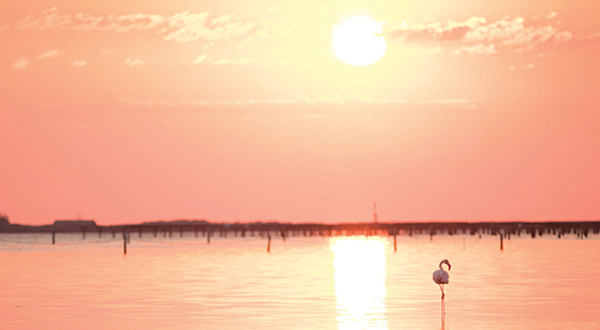
The Ebro Delta is indeed one of the most beautiful natural settings in the world. Its uniqueness is defined by an incomparable natural environment of great biological wealth that accommodates a wide diversity of flora and fauna. This 320 km2 of flat ground are not only the largest and most peculiar aquatic habitat in Catalonia, but it is also one of the most important wetland areas in the Mediterranean.
The Ebro Delta’s silhouette is outlined in the Mediterranean with a shape that allows us to look incredible landscapes of lagoons surrounded by reeds in the coastal zone, while in the outermost zone, there are mirages created on salty ground, the long-deserted beaches and the characteristic vegetation in this type of lands. The Ebro Delta’s landscape has a great personality as well as its people. The identity of this place is represented by its geographical and natural reality as well as the cultural and historical heritage of its inhabitants.

In 1983, the Government of Catalonia declared this area as the Ebro Delta Natural Park, at the request of its inhabitants, with the aim of preserving the biological wealth and achieving a balance between natural values and human presence. The protected area has a total surface of 7,736 hectares and covers some lagoons (Canal Vell, les Olles, El Garxal, l’Alfacada, la Tancada, l’Encanyissada, la Platjola), islands (Buda, Sapinya, Sant Antoni), peninsulas (Punta del Fangar, Punta de la Banya), Ullals de Baltasar and Erms de Casablanca.
Regarding this issue, it should be noted how over the last years the Ebro Delta has been set up as an internationally recognised sustainable tourism destination. This destination is supported by the European Charter for Sustainable Tourism (CETS), it has the title of European Destination of Excellence qualification, and it has also been declared Terres de l’Ebre Biosphere Reserve.













